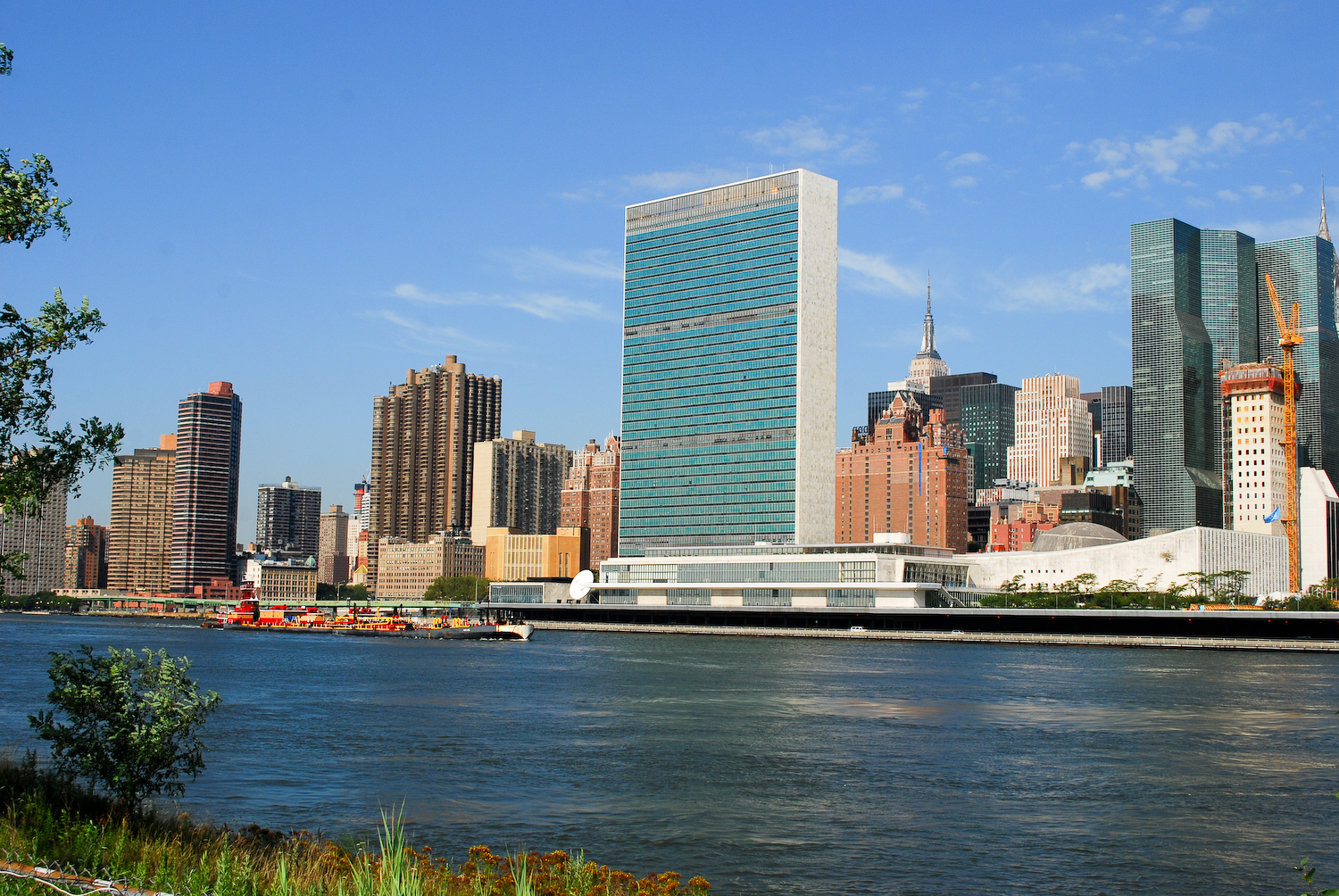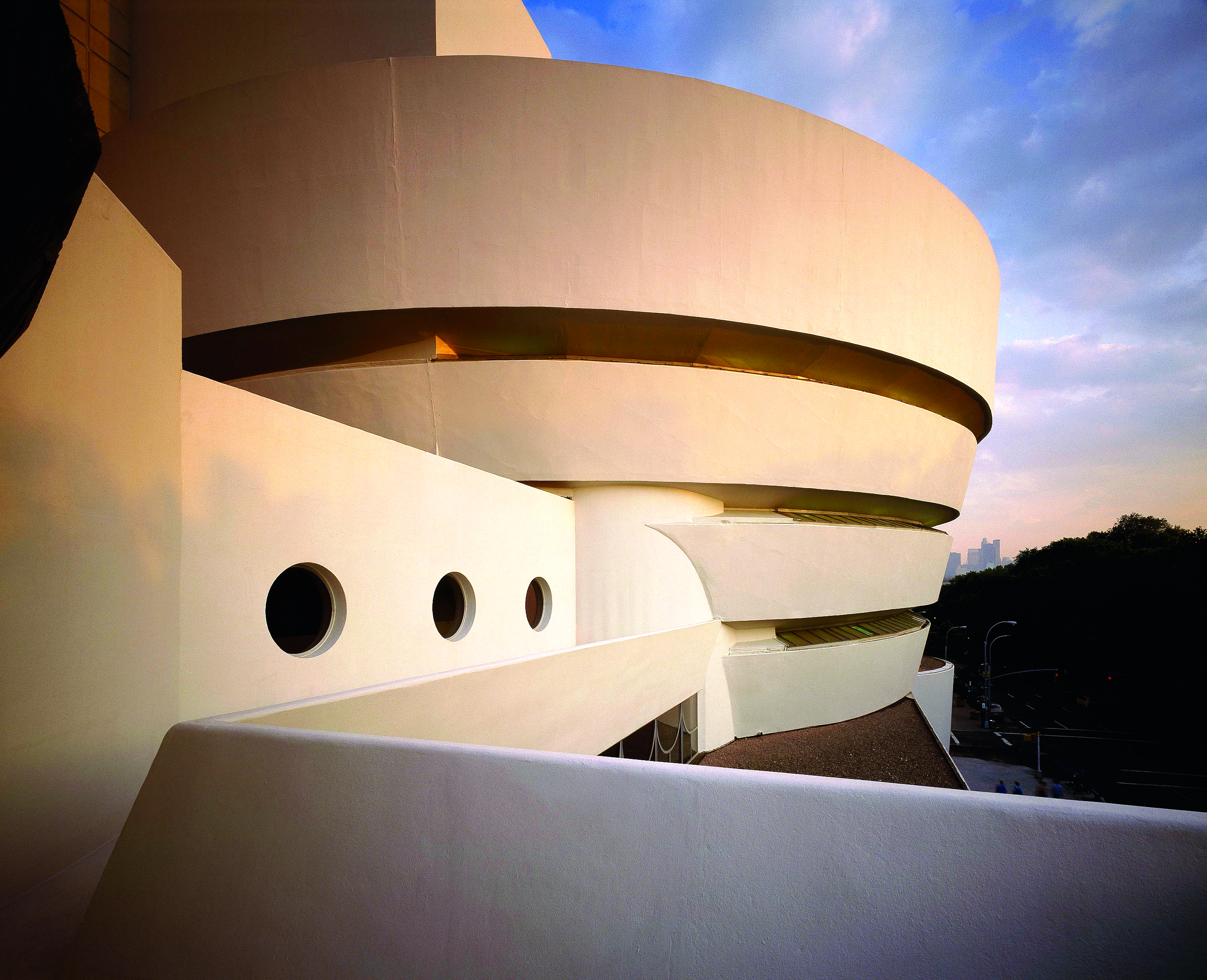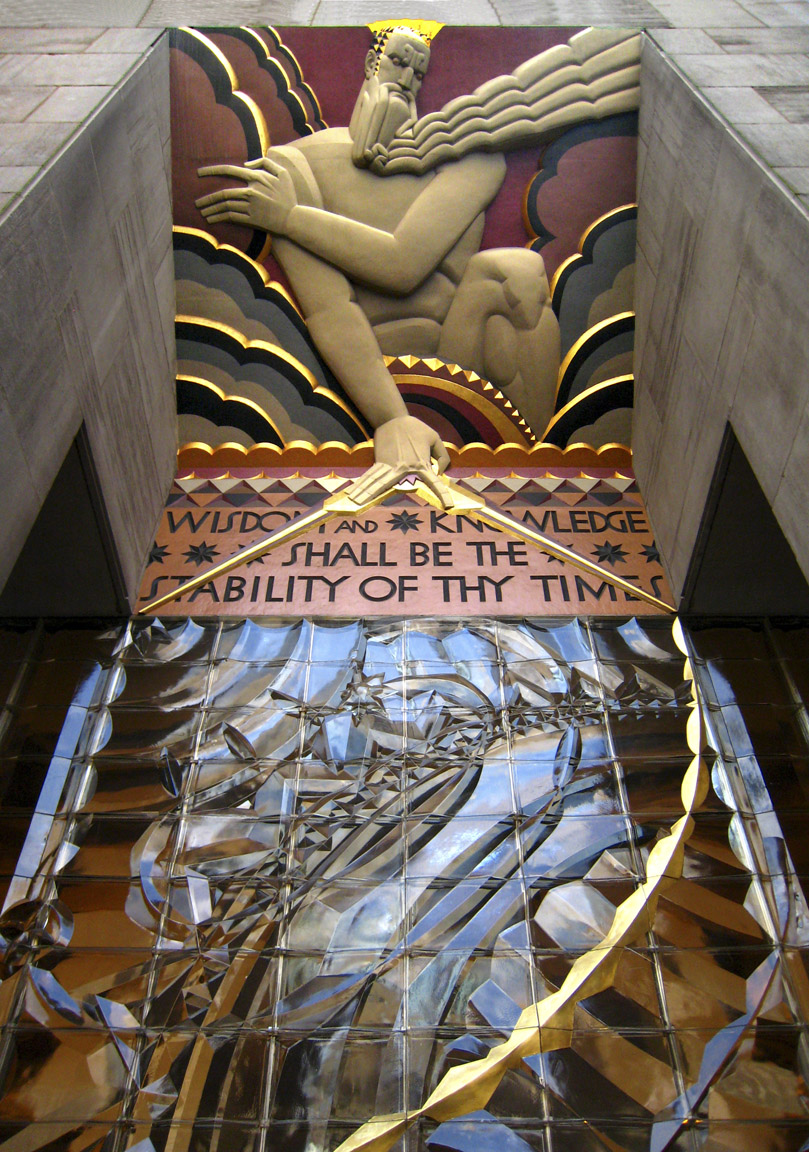The tall Secretariat Building overlooking New York’s East River is the centerpiece of the United Nations complex and a symbol of the quest for peace between nations. The smooth glass facade is also a landmark example of the International Style, a mid-twentieth century movement toward simple, geometric design. The architects included Le Corbusier, Oscar Niemeyer, and Wallace Harrison.
The United Nations officially came into being October 24, 1945. The Secretariat building was completed in 1952 and renovated in 2012.
Learn about the International Style >> Modernism – Picture Dictionary of Modern Architecture




 PHOTOS: The National 9/11 Memorial NYC
PHOTOS: The National 9/11 Memorial NYC